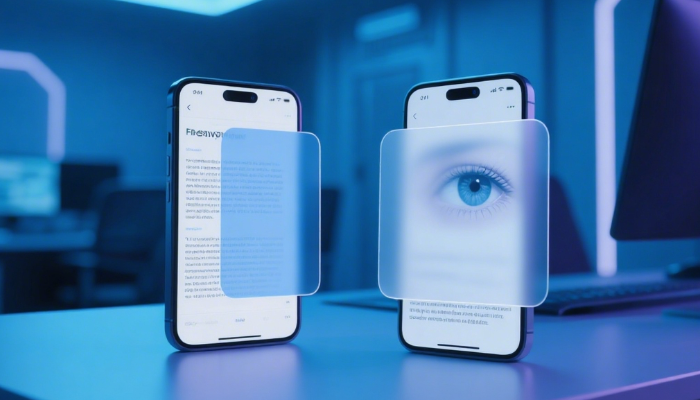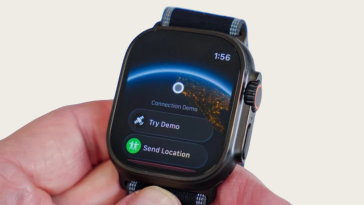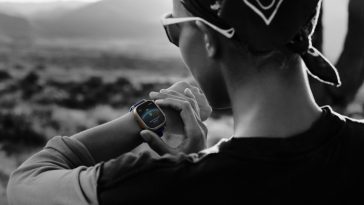As our digital lives evolve, balancing privacy and eye health has become a priority, especially in privacy-conscious regions like Europe and North America. When shopping for screen protectors, you’ll often encounter two terms: Anti-Spy and Privacy Screen. Are they the same? Which one offers better eye protection? Let’s break down the technology behind each, compare their features, and emphasize what matters most for your eyes.
Understanding Anti-Spy and Privacy Screen Technologies
What Is an Anti-Spy Screen Protector?
- Also known as a privacy screen protector.
- Uses micro-louver technology to narrow the viewing angle of your device.
- Only the person directly in front of the screen can clearly see the content; side viewers see a blacked-out or blurred display1.
- Ideal for public settings or workplaces to prevent “shoulder surfing” and protect confidential information2.
What Is a Privacy Screen Protector?
- “Privacy screen” typically refers to the same concept as anti-spy, focusing on limiting the screen’s visibility to outsiders.
- The terms are often used interchangeably, especially in Western markets, where privacy is a key concern2.
Key Differences in Technology
| Feature | Anti-Spy Screen Protector | Privacy Screen Protector |
|---|---|---|
| Viewing Angle | Narrowed using micro-louver layer | Narrowed using privacy filter3 |
| Privacy Effect | Blocks side views (left/right, sometimes up/down)1 | Blocks side views |
| Additional Eye Features | Varies by brand | Often includes anti-glare and blue light reduction |
| Market Terminology | “Anti-spy” often used in Asia | “Privacy screen” more common in EU/NA2 |
Emphasizing Eye Protection Features
Modern privacy screen protectors offer more than just privacy—they are designed with eye health in mind, meeting the demands of privacy-conscious Western users.
1. Anti-Glare Properties
- Both anti-spy and privacy screens can come with anti-glare coatings that reduce reflections from sunlight or indoor lighting.
- This significantly cuts down on eye strain caused by screen glare, making it easier to use your device for long periods.
2. Blue Light Filtering
- Exposure to blue light from digital screens can disrupt sleep and cause eye fatigue.
- Many privacy screen protectors now include blue light reduction technology, filtering out harmful high-energy visible (HEV) light.
- Brands may advertise blue light reduction rates from 30% up to 50% or more.
3. Brightness and Clarity
- Privacy filters slightly dim the display due to the privacy layer.
- Top brands use advanced materials to preserve up to 85% of screen brightness, balancing privacy, eye comfort, and usability23.
4. Touch Sensitivity & Durability
Quality privacy screen protectors maintain high touch sensitivity while protecting against scratches, fingerprints, and smudges.
Which Is Better for Eye Protection?
- There is no significant difference between “anti-spy” and “privacy screen” protectors in eye protection if both feature anti-glare and blue light filtering2.
- The key is to choose a high-quality privacy screen protector with advanced eye-care features.
- For privacy-focused Western markets, privacy screen protectors that prioritize anti-glare and blue-light reduction are ideal for combining security with eye health.
Recommendations for Privacy- and Eye-Conscious Users
- Look for these features:
- Blue light filtering (30%+)
- Anti-glare/matte finish
- High brightness retention (80%+)
- Compatible with your device model
- Major brands (e.g., 3M, PanzerGlass, ZAGG, Belkin) cater specifically to privacy and eye protection needs in the US and Europe23.
Conclusion
For users in regions with heightened privacy requirements, both anti-spy and privacy screen protectors deliver strong privacy benefits—with eye protection depending on specific extra features. Choose a privacy screen protector with anti-glare and blue light filtering technology to ease eye strain, prevent sleep disruption, and secure your sensitive information. Prioritizing these qualities ensures your screen stays private—and gentle on your eyes—all day long.





 No products in the cart.
No products in the cart.